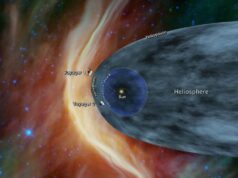
The Great Barrier Reef has been having a rough year. Warm waters have led to record coral bleaching this year and could hasten the reef’s die-off. But while surface corals are suffering, nearly a mile beneath the surface, deep-sea corals near the Great Barrier Reef are thriving.
The coronavirus pandemic has complicated scientific research efforts, but a team with the Schmidt Ocean Institute remained one of the few to continue its valuable work during these strange times. Researchers worked remotely with a crew onboard a research vessel in Australia’s Coral Sea Marine Park from April to June to survey the depths as part of an effort to map the entire ocean floor by 2030. While studying the region, the scientists also discovered the deepest living corals in East Australia and up to 10 new species of snails, fish, and sponges. The corals, thankfully, are still bright with color, safe from bleaching that can cause coral to expel the algae that lives in symbiosis with them.
During the course of the expedition, the cameras captured extraordinary images of squid, sea cucumbers, and nautiluses. The team also found animals previously only thought to exist elsewhere hidden beneath the waves. For instance, they found a species of spikefish here that had only been known to live in Hawaiian waters previously.
The expedition would often stream the dives live with an available chat where other scientists and experts could comment on the wildlife appearing in the video. Researchers from around the world came together to identify new species.
The expedition wasn’t just about the creatures, though. The team used multi-beam sonar technology to map the seafloor, giving scientists a detailed view of the geography and how it evolved over time. The growing dataset will provide key information about how the seafloor may react to future changes, including global warming.
G/O Media may get a commission
This directly affects the ecosystem and wildlife that call it home. Ultimately, this all affects us, too.
“Everything in the world that’s alive basically forms a tapestry that ultimately holds us,” Daniela Ceccarelli, a marine ecologist who worked on the expedition, said in a video the team released. “I think it’s important to think about that because every time you lose something, you lose a thread out of the tapestry that ultimately supports us, humans.”
Source: gizmodo.com








